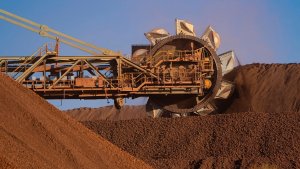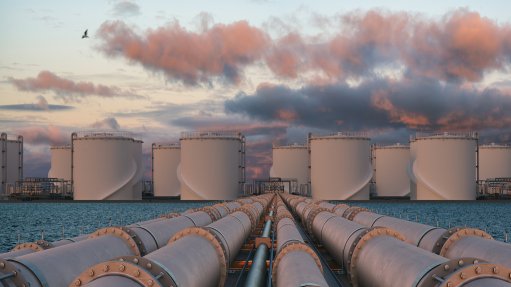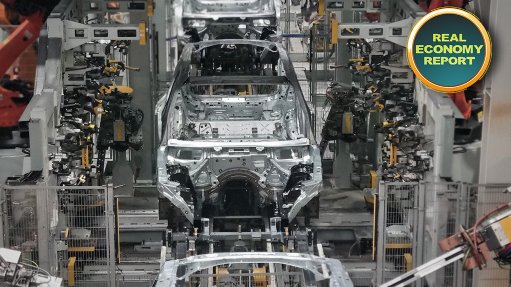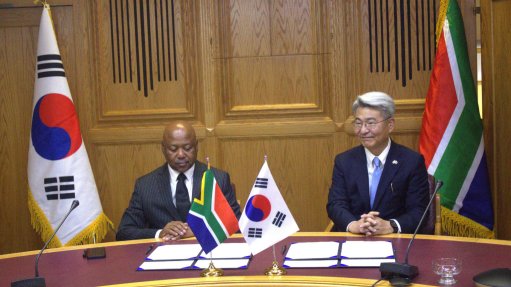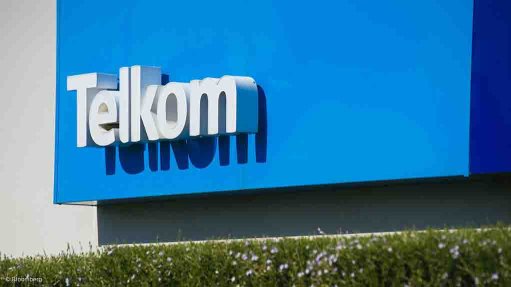BMI revises 2024 iron-ore price forecast lower to $110/t
Market analysis firm BMI, a Fitch Solutions company, has revised down its 2024 iron-ore price forecast from an average of $120/t to $110/t, as subdued demand in mainland China amid the ongoing property downturn continues to exert downward pressure on the iron-ore market.
In its market commentary published on August 22, the company said that iron-ore, at 62% iron content, prices at Qingdao Port were currently hovering below $100/t, about $88/t as of August 16, marking the lowest level since November 2022, with the year-to-date average in 2024 thus far being $109/t.
After retaining resilience early this year, iron-ore prices have been trending downwards throughout the year as weak mainland Chinese demand shows no signs of reversing.
“We expect negative sentiment over the sluggish mainland Chinese property sector, the downfall of which now looks irreversible, to remain, further capping prices,” BMI said.
BMI’s 2024 price forecast of $110/t suggests that the company expects prices to improve slightly from current levels towards the end of the year, leaving room for small upside, though contingent upon stimulus announcements from China.
On the demand side, steel production in China and therefore demand for iron-ore remained sluggish, with property sector weakness adding to the “grim” picture, BMI said.
The company pointed out that, from January to June, China's production of crude steel decreased by 1.1% year-on-year, while production in June edged slightly higher by 0.2% year-on-year, according to the World Steel Association.
The domestic steel industry has been facing a continued setback, with the steel Purchasing Managers’ Index (PMI) falling to 42.5 in July, down from 47.8 in June, highlighting a decline in steel sector activity.
Dipping steel production, with the sub-index dropping 7.4 points to a four-month low of 38.5, as well as plunging new orders, which fell to 40.3 in July from 49.4 in June, contributed to the bleak outlook.
BMI noted that China's overall manufacturing PMI remained in contractionary territory for the third consecutive month in July, with a reading of 49.4, compared with 49.5 in June.
Additionally, major steel producer Baowu Steel highlighted in August that the domestic steel sector remained in crisis, which was likely to be more prolonged and severe than previous downturns.
Contrasting with the lagging steel sector, China's imports of iron-ore grew by 6.7% year-on-year in the first seven months of 2024, though likely adding largely to inventories, signalling that domestic consumption remains muted.
“In a display of weak domestic demand, iron-ore inventories at China's ports have continued a strong build-up, rising by 31% year-to-date to 149.6-million tonnes as of August 16, which has the potential to place a cap on prices in the coming months.
"We expect mainland Chinese iron-ore demand to remain lacklustre, given the ongoing challenges within the domestic property sector,” BMI said.
The firm’s country risk team believes that China's housing downturn is likely to last years, driven by an oversupply amid waning speculative demand.
Meanwhile, developers faced a formidable credit crunch and repairing the sector's balance sheet was expected to take years, BMI added.
Additionally, the firm said that genuine homebuyers were likely to stay away owing to falling prices, stretched valuations and the risk that developers may not complete their homes.
The ongoing property downturn in China still shows little sign of reversing, with investment in the real estate sector declining by 10.2% year-on-year over January to July, after falling by 10.1% year-on-year during the first six months.
Outside of China, steel production and demand for iron-ore remain muted as of the first half of the year. According to the World Steel Association's report, global crude steel production stayed stable from January to June, with June registering a slight year-on-year growth of 0.5%.
Steel production in India, Türkiye and Iran outperformed, rising by 7.4%, 16.9% and 5.9% year-on-year respectively during the first half of 2024. Germany and Brazil also saw a rise in steel production during January to June, with growth rates standing at 4.5% and 2.4% year-on-year respectively.
However, steel production in other key markets, including Japan, the US, Russia and South Korea remains in contraction as of the first half of the year. During January to June, Japan and the US registered year-on-year steel production growth rates of -2.6% and -2.4% respectively, while steel production in Russia and South Korea declined by 3% and 6.4% year-on-year respectively.
On the supply side, BMI said that iron-ore production remained healthy across major miners. Iron-ore shipments and production broadly increased for most majors, with miners aiming to maintain their production levels.
Mining major BHP saw record iron-ore production in the 2024 financial year ended June 30, of 260-million tonnes, a 1% year-on-year increase, and expects 2025 financial year production to come in at between 255-million and 265.5-million tonnes.
Fortescue achieved record iron-ore shipments of 53.7-million tonnes in the fourth quarter of the 2024 financial year, registering 10% year-on-year growth, bringing total 2024 financial year shipments to 191.6-million tonnes and setting the 2025 financial year total shipments guidance at 190-million to 200-million tonnes.
Vale's iron-ore production in the first half of the year increased by 4.1% year-on-year to 151.4-million tonnes, with the miner reinforcing its confidence in the full-year production coming in at the upper end of its previously set guidance of 310-million to 320-million tonnes.
Lastly, Rio Tinto's 2023 iron-ore shipments rose by 3% year-on-year to 332-million tonnes, with the miner setting its 2024 guidance at between 323-million and 338-million tonnes.
Looking beyond this year, BMI expects iron-ore prices to follow a multi-year downtrend.
“We maintain our view that iron-ore prices will consistently trend downwards, as cooling steel production growth and higher iron-ore output from global producers will continue to loosen the market. In the long term, we forecast prices to decline from an average of $110/t in 2024 to $78/t in 2033. While significantly lower than $156/t in 2021, the $97/t yearly average that we forecast for 2024 to 2028 would still be higher than the 2016 to 2020 average of $78/t,” the firm said.
BMI said it expected China's slowing demand growth to be the main driver of lower prices, a trend that was now already in its early stages.
“A structural shift away from industrial, steel-intensive sectors towards services and less-steel-intensive infrastructure will have a negative impact on iron-ore demand. This shift in China’s economic growth trajectory is expected to depress steel consumption and production growth rates,” the firm said.
BMI noted that, while domestic steel production was allowed to significantly outstrip steel demand over the past decade, with the resulting surplus exported, the firm expected production growth to be brought closer in line with domestic consumption patterns in the coming years.
“Based on these forecasts, we expect China’s yearly iron-ore consumption to peak before the end of the decade while iron-ore demand across Asia more broadly will continue to grow, but at a very slow rate,” BMI said.
Consistent with this shift, the firm expects an increased focus on low-carbon steel globally, which requires much less iron-ore and is produced at electric arc furnaces, compared to the current blast furnace production model that requires high levels of iron-ore and coking coal, which is highly polluting.
Heightened pressures on environmental conservation through regulatory and voluntary commitments are expected to be an impetus to driving changes for greener steelmaking.
BMI noted that, as the EU's Carbon Border Adjustment Mechanism takes effect, a growing number of startup steelmakers have started to create green steel for industrial use.
In the EU, all major steelmakers are involved in either research or pilot projects to test low carbon steel production processes.
The US may examine similar trade measures to foster domestic investment in greener steel production as well. These trends also pose further downside risks for BMI’s long-term iron-ore demand forecast, such that demand may peak sooner than 2027 to 2028.
Risks to BMI’s current price outlook are currently skewed to the downside.
“Iron-ore prices will head even lower than our current expectations if China’s economic momentum remains weaker than expected in 2024. On the upside, a stronger recovery in China’s property sector will be the major influencer driving demand and supporting iron-ore prices. Supply constraints at producing mines could also push prices higher,” the firm said.
BMI added that unforeseen weather conditions in the wake of La Niña developing towards the end of the year, as well as labour and energy issues, could pressure key producing markets, including Australia and South America.
Article Enquiry
Email Article
Save Article
Feedback
To advertise email advertising@creamermedia.co.za or click here
Comments
Press Office
Announcements
What's On
Subscribe to improve your user experience...
Option 1 (equivalent of R125 a month):
Receive a weekly copy of Creamer Media's Engineering News & Mining Weekly magazine
(print copy for those in South Africa and e-magazine for those outside of South Africa)
Receive daily email newsletters
Access to full search results
Access archive of magazine back copies
Access to Projects in Progress
Access to ONE Research Report of your choice in PDF format
Option 2 (equivalent of R375 a month):
All benefits from Option 1
PLUS
Access to Creamer Media's Research Channel Africa for ALL Research Reports, in PDF format, on various industrial and mining sectors
including Electricity; Water; Energy Transition; Hydrogen; Roads, Rail and Ports; Coal; Gold; Platinum; Battery Metals; etc.
Already a subscriber?
Forgotten your password?
Receive weekly copy of Creamer Media's Engineering News & Mining Weekly magazine (print copy for those in South Africa and e-magazine for those outside of South Africa)
➕
Recieve daily email newsletters
➕
Access to full search results
➕
Access archive of magazine back copies
➕
Access to Projects in Progress
➕
Access to ONE Research Report of your choice in PDF format
RESEARCH CHANNEL AFRICA
R4500 (equivalent of R375 a month)
SUBSCRIBEAll benefits from Option 1
➕
Access to Creamer Media's Research Channel Africa for ALL Research Reports on various industrial and mining sectors, in PDF format, including on:
Electricity
➕
Water
➕
Energy Transition
➕
Hydrogen
➕
Roads, Rail and Ports
➕
Coal
➕
Gold
➕
Platinum
➕
Battery Metals
➕
etc.
Receive all benefits from Option 1 or Option 2 delivered to numerous people at your company
➕
Multiple User names and Passwords for simultaneous log-ins
➕
Intranet integration access to all in your organisation




